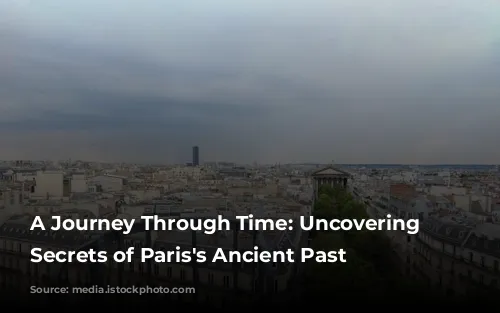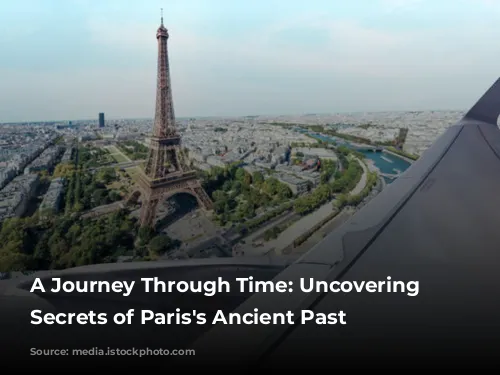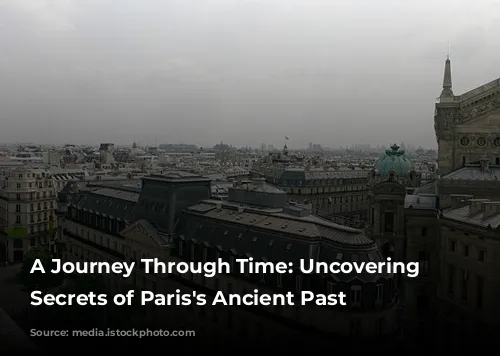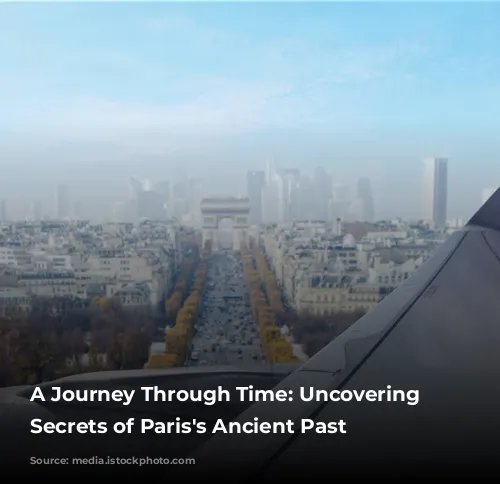Welcome to a fascinating exploration of Paris’s rich history, stretching back to the time of the Gauls! We’ll delve into the fascinating evolution of this iconic city, starting with its humble beginnings as a Gallic settlement and tracing its development through the Roman era, the fall of the Empire, and the dawn of the Middle Ages.

The Birth of a City: From Gallic Oppidum to Roman Lutetia
The story of Paris starts with the Parisii, a Celtic tribe who established their oppidum (fortified settlement) on the Ile de la Cité around 250-225 BC. This island, smaller than it is today, was linked to the riverbanks by two bridges. During the Gallic Wars, the Parisii burned these bridges in a desperate attempt to resist Julius Caesar’s Roman legions in 52 BC.
After the Roman conquest, a Gallo-Roman city arose on the Ile de la Cité. However, it was on the Montagne Sainte-Geneviève – the hill on the southern bank of the Seine – where the city truly flourished. Here, impressive public buildings were erected, while the northern plain, prone to flooding, remained largely uninhabited. During the early Roman Empire, Lutetia enjoyed a period of prosperity.
The barbarians, however, wreaked havoc on the city around 275 AD. As a protective measure, a fortified keep was constructed on the Ile de la Cité, and a surrounding wall was built to defend the city. Contrary to what was long believed, the Gallo-Roman city did not shrink to just the island during the late Roman Empire. A significant part of the southern bank remained populated.
Lutetia played a crucial military role during the 4th century. Important Roman emperors, like Julian and Valentinian, stayed in the city. Later, Clovis, the founder of the Frankish dynasty, made Lutetia the cathedra regni – the seat of his kingdom, solidifying its importance.
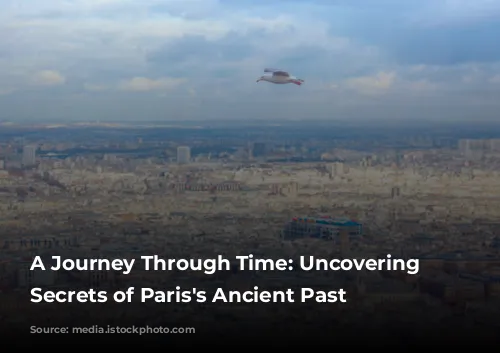
The City’s Infrastructure: Roads, Buildings, and Public Spaces
The cardo, the main north-south axis of Lutetia, connected the city to Senlis in the north and Orléans in the south, following the route of present-day Rue Saint-Martin and Rue Saint-Jacques. Several east-west streets branched off from the cardo, adapting to the terrain’s natural slope.
The Ile de la Cité holds few remnants of the early Roman Empire. The island’s topography was radically altered during the late Roman Empire when a rampart was constructed. Subsequent rebuilding further transformed the island, raising the ground level considerably. However, excavations have yielded valuable clues about the city’s past: foundations discovered in the Palais de Justice, remains uncovered at the Parvis Notre-Dame, and a paved floor with walls excavated in the 1960s all offer glimpses into Lutetia’s early Roman life.
While there’s no evidence of a temple beneath the Notre Dame Cathedral, the Nautae pillar – found beneath the chancel – speaks to the presence of the guild of boatmen in Lutetia. The necropolis, located south of the Orléans road, was a testament to the city’s growth and its inhabitants.

Public Spaces and Monuments: From Baths to a Forum
Lutetia boasted three impressive bath complexes. The northern baths, known as the Cluny baths, are exceptionally well-preserved. Their layout, with circular hot rooms, speaks to the sophistication of Roman architecture. The baths likely date back to the late 2nd or early 3rd century.
The eastern baths, located near the cardo, were slightly smaller but also featured circular hot rooms. Excavations have shown they predate the Cluny baths and replaced an earlier structure. Finally, south of the forum, a complex initially believed to be a villa revealed its true purpose: a grand bath complex, ornamented with marble and painted walls.
The forum, a vast rectangular space, served as the heart of the city. Excavations have revealed its impressive size and structure, including a central platform likely used for a temple or basilica. Graffiti on the central platform’s retaining wall provide evidence of its construction in the early 2nd century.
Lutetia also boasted an amphitheater, a testament to the Romans’ love for entertainment. Its oval arena, measuring 52 by 46 meters, was used for gladiatorial contests and other spectacles. A small theater, located near the Jardin du Luxembourg, further demonstrated the city’s cultural richness.

Lutetia’s Decline and the Rise of Paris
After the barbarian invasions of the late 3rd century, Lutetia faced a period of decline. However, the city’s resilience is evident in the construction of a fortified keep on the Ile de la Cité. Around 300 AD, a rampart was built around the island, its foundations uncovered during various excavations.
The rampart’s construction significantly altered the island’s topography, raising the ground level by up to two meters. This rebuilding resulted in the replacement of older buildings with new ones. Excavations have brought to light fragments of these buildings, including two hypocaust-heated rooms and a substantial wall with buttresses.
While the Ile de la Cité underwent transformation, the southern bank, especially around Saint-Marcel, remained a significant part of the city. A Christian cemetery on the southern bank and the discovery of a late hypocaust floor in the Jardin du Luxembourg further solidify this conclusion.
The discovery of a sanctuary dedicated to Mercury on the Montmartre hill, outside the city limits, suggests that some aspects of Roman life continued even beyond the fortified city walls.
From the time of the Gauls to the Roman Empire and beyond, Paris has endured. The city’s evolution, as revealed by archaeological discoveries, paints a captivating picture of its rich history, a testament to its ability to adapt and thrive over centuries.


